Search the Special Collections and Archives Portal
Search Results
U-Wah-Un Study Club Records
Identifier
MS-00198
Abstract
U-Wah-Un Study Club Records (1919-1987) include a complete set of the organization's yearbooks from 1919 to 1977, a club scrapbook, meeting minutes, and financial records.
Archival Collection
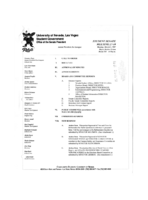
Meeting minutes for Consolidated Student Senate University of Nevada, Las Vegas, March 3, 1997
Date
1997-03-03
Archival Collection
Description
Includes meeting agenda and minutes, along with additional information about referendums and letters.
Text
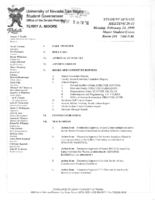
Meeting minutes for Consolidated Student Senate University of Nevada, Las Vegas, February 23, 1998
Date
1998-02-23
Archival Collection
Description
Includes meeting agenda and minutes.
Text
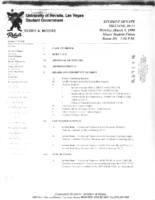
Meeting minutes for Consolidated Student Senate University of Nevada, Las Vegas, March 9, 1998
Date
1998-03-09
Archival Collection
Description
Includes meeting agenda and minutes.
Text

Meeting minutes for Consolidated Student Senate University of Nevada, Las Vegas, March 1, 1999
Date
1999-03-01
Archival Collection
Description
Includes meeting agenda and minutes.
Text
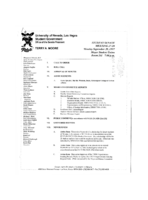
Meeting minutes for Consolidated Student Senate University of Nevada, Las Vegas, September 29, 1997
Date
1997-09-29
Archival Collection
Description
Includes meeting agenda and minutes.
Text
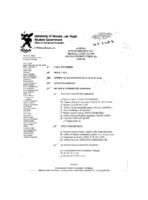
Meeting minutes for Consolidated Student Senate University of Nevada, Las Vegas, April 24, 1995
Date
1995-04-24
Archival Collection
Description
Includes meetin agenda and minutes, along with additional information about senate bylaws, reports, proposals, and the Mark Huff & The Inflatables Appearance Agreement.
Text

Interview with Robert Elmer Friedrichs, August 27, 2004
Date
2004-08-27
Archival Collection
Description
Narrator affiliation: Radiation Safety, Reynolds Electrical and Engineering Company (REECo); Sr. Scientific Adviser, National Nuclear Security Administration (NNSA)
Text
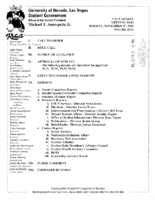
Meeting minutes for Consolidated Student Senate, University of Nevada, Las Vegas, November 17, 2004
Date
2004-11-17
Archival Collection
Description
Includes meeting agenda and minutes, along with additional information about bylaws.
Text
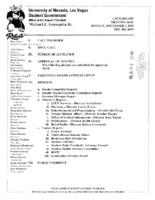
Meeting minutes for Consolidated Student Senate, University of Nevada, Las Vegas, December 01, 2004
Date
2005-12-01
Archival Collection
Description
Includes meeting minutes and agenda. CSUN Session 34 Meeting Minutes and Agendas.
Text
Pagination
Refine my results
Content Type
Creator or Contributor
Subject
Archival Collection
Digital Project
Resource Type
Year
Material Type
Place
Language
Records Classification
